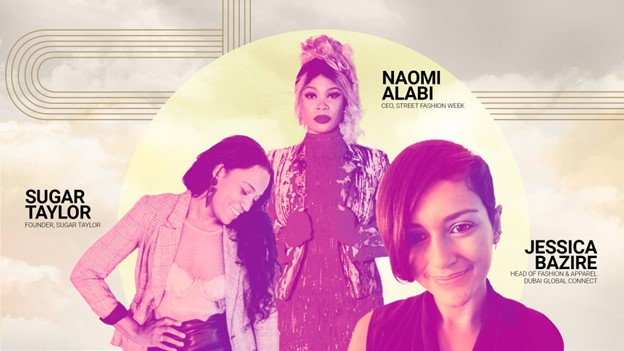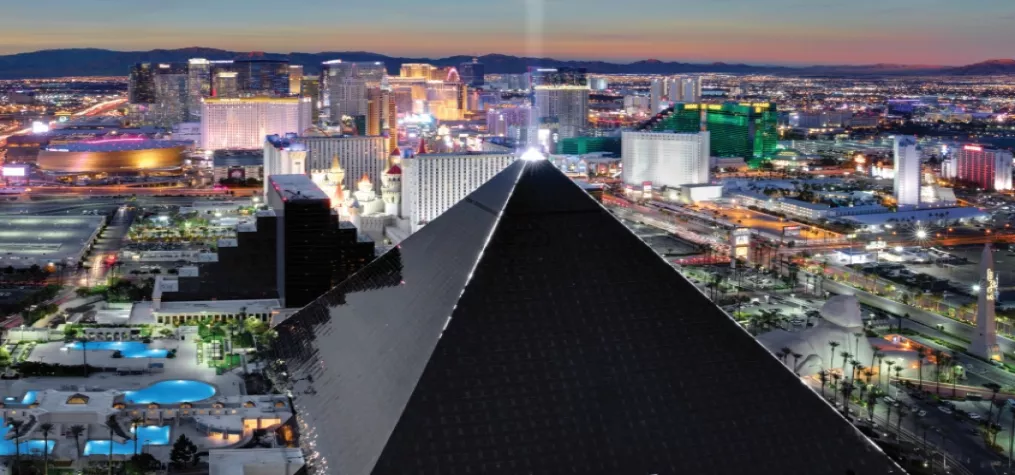Launching at Trade Shows Differently: Are You Up to Date?

Sponsored Article by Meet Ribbon
Following our roundtable on "The Future of Market Centers", we’ve extended the conversation to cover how brands are “Launching at Trade Shows Differently”. A forward thinking group of insiders identified the “new normal” with a focus on the fashion industry. They covered it all: pre and post show essentials, where trade shows are headed, tech influencing the buying process and how the entire trade show ecosystem is getting creative and thinking about things differently.
Please find highlights below and watch the full roundtable here.
This roundtable was moderated by Ribbon’s CEO Vinit Patil and Global Fairs Liaison Director Jimmy MacDonald, who founded the London Design Fair.
Sharing their opinions on the best ways to launch a brand in this new environment were a diverse group of panelists:
Naomi Alabi, Founder of SFWRUNWAY, has played a pivotal role in launching hundreds of streetwear brands since the show’s debut in 2016.
Jessica Bazire, Head of Fashion & Apparel at Dubai Global Connect (DGC), is responsible for the commercial strategy and development of DGC’s fashion vertical.
Sugar Taylor, Founder of Sugar Taylor Co., recently launched marketplace When in Roam and is transitioning to textile goods by exhibiting at various North American trade shows.
New Standards for Launching
Given the panelists’ experience with trade show organization, they had plenty of insightful details to share with start-up brands. Naomi Alabi was quick to mention that a strong visual concept is only one factor when qualifying brands for market: “There's a performance requirement in terms of how much your business needs to be earning a month and the amount of staff they need to have, because it doesn't make sense for us to market you and bring you all this visibility, but you don't have the infrastructure in the business to handle it.” Naomi realized she had to get creative if she wanted to launch new brands without neglecting her buyers’ expectations, so she created education resources. She explained that SFWRUNWAY provides “crash courses on how to set up your brand properly, how to create a marketing plan to ensure that you do have good products, and learn to build a community. [Through these initiatives] you absolutely can reach our target goal of what our performance requirement is.”
Jessica Bazire explained that when launching a brand at market, it’s important to keep in mind the entire wholesale ecosystem, starting with buyers: “We've really been trying to engage with buyers to understand what they're looking for from the brands that we bring to them at the shows. They can have the greatest concept in the world, beautiful products and a great story, but if they can't [deliver that] to the buyer, then it just falls flat… and they also start to lose faith in the other exhibitors of that show.” Jessica went on to explain how DGC, a 1,000,000 square meter B2B wholesale trading center opening in 2025, has attracted the attention of many start-up brands looking to expand into new markets: “In the Middle East, we have a number of exciting markets, and a lot of people are coming to me because they're very keen to access this market, as well as a lot of the surrounding emerging markets as well. [While bringing these brands to a new market] we’re looking for that sales readiness, as well as a really strong brand identity and story.”
What Success Means Today
When it comes to measuring results post show, Sugar Taylor had an illuminating perspective on what success looks like: “There's the obvious ROI. [Let’s say] I've spent $10,000, did I get that in sales? But beyond that, it's about the connections. I've met buyers from Anthropologie and Target, and we've continued to have conversations. So I would not have met those people if I hadn't invested in my brand in that way. So I see [trade shows] more as a marketing investment than an immediate ‘I need to make this particular amount of capital back.’ I think that it really just depends on what your goals are. If your goals are more PR aligned, where you just want to connect and align yourself with other types of brands; even other brands that I've met at the show, were great connections for me.” Sugar went on to explain that those conversations post show can lead to exciting new business opportunities in the months and even years to come, if you make a point of prioritizing follow-up and lead capture throughout the event.
From a show organizer’s perspective a lot does come down to actual metrics, not just for sales, but for engagement as well. According to Jessica Bazire, all of this can be tracked through social media and savvy event tech platforms: “I think the key thing with technology that [is true] across all businesses, not just the fashion industry, is that we now have so many more data points that we can use to help us make better and more informed decisions. From a trade show’s point of view [it’s beneficial] to actually see who’s connecting with who… Then understanding, what is it that people are going to be drawn to? Is it those brands that have paid to be featured at the top? What is it that people are engaging with? [What can we learn from this] and where do we need to invest more?” Jessica went on to describe how these technology driven metrics keep trade shows and market centers a step ahead especially when it comes to choosing the brands to include in Metaverse and AR campaigns.

How Technology is Changing Things
Even with thoughts of AI, Jessica agreed that in-person will always be a necessity especially in regards to fashion: “Fashion is a great industry, because it is such a tactile industry, as much as we can survive digitally, [we’ll always want] to interact with product. That's what buyers love! They’re such product people, they could go on and on about product for hours, and nothing really beats that.” For her it’s about enhancing the in-person experience with digital and virtual components, creating true hybrid events: “I think what we'll see is people trying to come up with ways to enhance the [product experience virtually].”
Naomi Alabi is already working on tech initiatives that bridge the gap between tactile fashion and virtual experiences: “I don’t know if you're familiar with the RFID chips that are popping up with certain brands, but they're … becoming more popular and they're pretty inexpensive to implement. If that original touch point was at the trade show, [it’s easy to track] the lifespan of products.” Naomi went on to explain how these scans can easily link to an NFT on the block chain: “So an artist designs a piece of art and sells it for maybe $20, but then the person who buys it improves the value of that product and resells it. With every resale, that initial artist gets paid for it. In a similar fashion, I can buy a piece of garment from a brand and then… say someone sees me wearing it, they can scan it, and for the lifetime of me owning that product, I make money.” SFWRUNWAY is now offering wearable tech consultations to help brands stay on the cutting edge of fashion technology.
A Different Post Show Approach
According to our panelists, sales tools, post show marketing campaigns and social media are essential components to a successful post show experience. Naomi Alabi described the importance of CRMs and marketing campaigns succinctly: “I think all brands should have a CRM tool, so that you're really organizing the context of all these meetings. [You’ll need it] to remember who you spoke to, who expressed interest, and to even pre-plan for follow up, whether that means drafting emails ahead of time or writing notes when you're having conversations with people. I think trade shows will never go out of business, because they are the ultimate resource for bringing people to you that you otherwise wouldn't have access to. Now, they can't hold your hand through the process, it is your job to kind of carry it from the point after you've made those connections.”
Sugar Taylor’s savvy post-show follow up campaign perfectly illustrates Naomi’s above point that it’s on the brand to maximize these connections. Sugar described her marketing strategy in detail emphasizing again that connection building remains the greatest value of the trade show experience: “Everyone I came in contact with at the show, I followed up with [them]. I sent them this email with a video in it and my subscriber list is pretty young, but I got about 500 to 600 new subscribers just from the show and having that conversation with them. Something like, ‘be on my exclusive list’ because I do let people know what I'm designing before it hits the market and that piques their interest. [Buyers] realize that everybody does know what everybody's selling now because you can find it so easily online on all these marketplaces. But nothing will ever trump that in-person trade show experience of connecting with someone in person.”
To watch the full roundtable, please visit Ribbon’s YouTube channel. For more information on Ribbon, please visit their website.


Add new comment